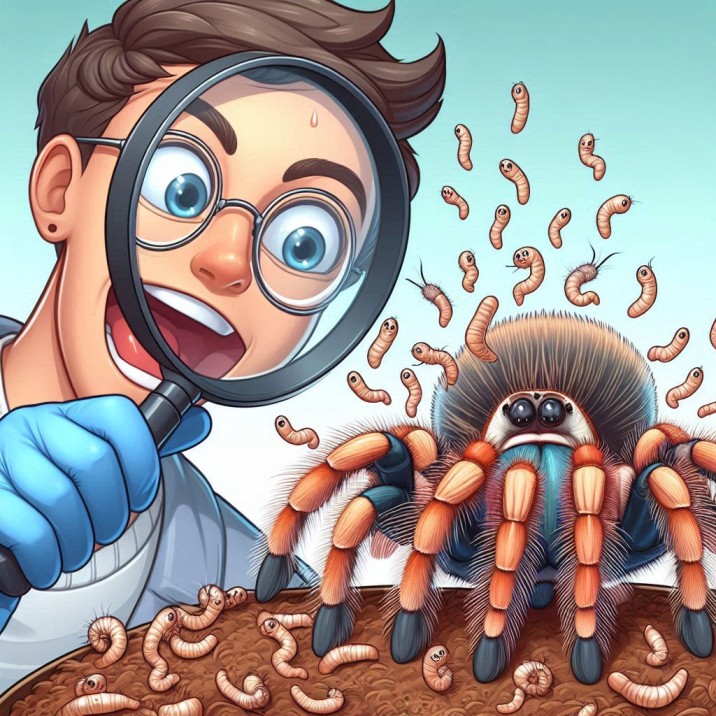Tarantulas are intriguing arachnids that captivate many people with their size, colors, and behaviors. Despite their fearsome reputation, tarantulas face several threats that can endanger their lives. This article explores what kills tarantulas, offering an in-depth understanding. By the end of this article, you’ll know how to better protect these unique creatures and ensure their safety in the wild and captivity.
Introduction
Table of Contents
Tarantulas are large, hairy spiders known for their distinctive appearance and behaviors. They inhabit various environments, from rainforests to deserts, and play a crucial role in the ecosystem by controlling insect populations. However, tarantulas face several dangers that can threaten their survival. Understanding what kills tarantulas can help us appreciate their importance and take steps to protect them.

What Kills Tarantulas
Natural Predators
Birds
Many bird species, including hawks and owls, are natural predators of tarantulas. These birds use their sharp beaks and talons to capture and kill tarantulas, often swooping down from the sky to catch them by surprise.
Lizards
Lizards, such as monitor lizards and geckos, are also common predators of tarantulas. They use their speed and agility to hunt and overpower these spiders, especially young or smaller tarantulas.
Mammals
Small mammals like mice, rats, and even some species of weasels can prey on tarantulas. These animals often invade tarantula burrows to find and eat them.
Environmental Hazards
Temperature Extremes
Tarantulas are sensitive to temperature changes. Extreme heat or cold can be fatal. In the wild, tarantulas seek shelter to avoid harsh temperatures, but in captivity, maintaining a stable environment is crucial.
Humidity Levels
Incorrect humidity levels can also harm tarantulas. Too much humidity can lead to fungal infections, while too little can cause dehydration and difficulty molting.
Habitat Destruction
Human activities such as deforestation and urbanization destroy tarantula habitats, making it difficult for them to find food and shelter. This leads to a decrease in their population and increases the risk of death.
Diseases and Parasites
Fungal Infections
Fungal infections are a significant threat to tarantulas, especially in humid environments. These infections can affect their exoskeleton and internal organs, leading to death if untreated.
Mites
Mites are tiny parasites that can infest tarantulas, causing irritation, stress, and potential infections. Regular cleaning and monitoring can help prevent mite infestations in captive tarantulas.
Nematodes
Nematodes are microscopic worms that can infect tarantulas, particularly in their digestive systems. Infections can lead to malnutrition and death if not addressed promptly.
Human Interference
Pesticides
Pesticides used in agriculture and pest control can be lethal to tarantulas. These chemicals can contaminate their food sources or habitats, leading to poisoning.
Captivity Issues
Improper care in captivity is a significant cause of death for pet tarantulas. Issues such as incorrect diet, inadequate habitat, and mishandling can all lead to fatal consequences.
Accidental Injuries
Falls
Tarantulas can suffer fatal injuries from falls. Their bodies are delicate, and a fall from even a short height can cause internal damage or exoskeleton fractures.
Predation in Captivity
In captivity, tarantulas can sometimes be housed with other animals that may pose a threat. For example, placing a tarantula with a larger, more aggressive species can lead to injury or death.
Table of Information
| Threat | Description | Prevention |
|---|---|---|
| Birds | Predators like hawks and owls hunt tarantulas. | Provide adequate hiding spots. |
| Lizards | Fast and agile predators that hunt tarantulas. | Secure enclosures and natural camouflage. |
| Temperature Extremes | Extreme heat or cold can be fatal. | Maintain stable environmental conditions. |
| Humidity Levels | Incorrect humidity can cause health issues. | Monitor and adjust humidity levels. |
| Habitat Destruction | Human activities destroy tarantula habitats. | Support conservation efforts and habitat preservation. |
| Fungal Infections | Infections that affect the exoskeleton and organs. | Maintain proper hygiene and environment. |
| Mites | Tiny parasites causing irritation and infections. | Regularly clean and inspect enclosures. |
| Nematodes | Microscopic worms infecting the digestive system. | Ensure clean food and water sources. |
| Pesticides | Chemicals that can poison tarantulas. | Avoid using pesticides near tarantula habitats. |
| Falls | Can cause internal damage or fractures. | Handle tarantulas carefully and prevent falls. |
Conclusion
Tarantulas are fascinating creatures that play an important role in the ecosystem. However, they face numerous threats, from natural predators to environmental hazards and human interference. By understanding what kills tarantulas, we can take steps to protect them and ensure their survival both in the wild and in captivity. Through conservation efforts and responsible pet care, we can help these unique spiders thrive.
FAQs about What Kills Tarantulas
1. What animals eat tarantulas? Birds, lizards, and small mammals are common predators of tarantulas.
2. Can tarantulas die from falling? Yes, tarantulas can suffer fatal injuries from falls, especially from heights.
3. How can I prevent mites in my tarantula’s enclosure? Regularly clean the enclosure and monitor for signs of mites to prevent infestations.
4. Are pesticides harmful to tarantulas? Yes, pesticides can poison tarantulas if they contaminate their food or habitat.
5. What should I do if my tarantula gets a fungal infection? Seek veterinary care and maintain proper humidity and cleanliness in the enclosure to treat and prevent fungal infections.

